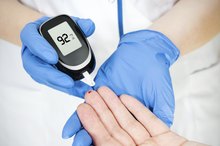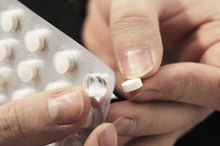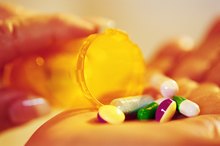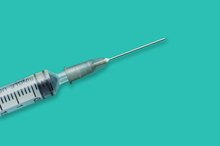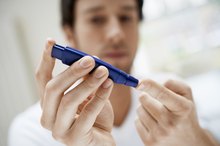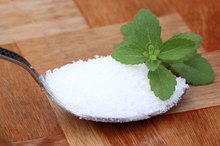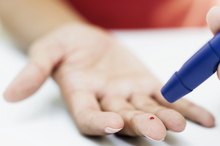What Are Glucose Tablets Used For?
Glucose tablets are composed of glucose sugar and other ingredients such as flavoring, preservatives and binding agents. Used mainly by people with diabetes, glucose tablets help to treat low blood sugar, also known as hypoglycemia. You can purchase different brands of glucose tablets from most drugstores. Keep them on hand in case of hypoglycemia, especially if you take insulin or oral diabetes medication.
Low Blood Pressure Signs
If you have diabetes, you may experience symptoms of hypoglycemia if your blood sugar falls below 70 milligrams per deciliter of blood, although you should speak with your health care provider about your individual blood sugar goals. The symptoms of hypoglycemia include feeling shaky, dizzy, sleepy, confused, angry, anxious, sad or hungry -- or having a rapid heartbeat, lack of coordination and tingling or numbness of your lips or tongue. Hypoglycemia is dangerous because it can lead to seizure, unconsciousness and even death if blood glucose continues to fall and is untreated.
Fast-Acting Carbs
Low Blood Sugar in Non-Diabetics
Learn More
If you have hypoglycemia symptoms, check your blood sugar if you can. The American Diabetes Association recommends taking 15 to 20 grams of carbohydrates if your blood sugar is indeed below 70 milligrams per deciliter. The amount of carbohydrate grams in one glucose tablet varies depending on the brand, so you should read the nutrition facts label. The Joslin Diabetes Center says that about three glucose tablets is 15 grams of carbohydrates.
Monitoring the Effects
After consuming 15 to 20 grams of carbohydrates -- roughly three to four glucose tablets -- rest for 15 minutes while waiting for your blood glucose to rise. After 15 minutes, recheck your blood sugar. If it is still low -- less than 70 milligrams per deciliter, according to the Joslin Diabetes Center, or less than 100 milligrams per deciliter according to the University of California, San Francisco, Medical Center, take another 15 to 20 grams of carbohydrates. Although you can use other fast-acting carbohydrate sources such as 1/2 cup of juice or 1 tablespoon of honey, glucose tablets are among the best choice for treating hypoglycemia. Other carbohydrate choices may contain fructose, another common type of sugar, which does not raise blood sugar as quickly as glucose. Glucose tablets contain only glucose sugar, so they break down and enter your bloodstream quickly, rapidly raising your blood sugar.
Glucose on the Go
How to Lose Weight Using Glucophage
Learn More
Glucose tablets are good to keep on hand when you are on the go because they have a long shelf life -- about three years -- but always check the expiration date on the package. You can keep them in your bag or somewhere with you since hypoglycemia can happen unexpectedly, especially if you are busy. The risk of hypoglycemia can increase if you exercise more than usual; drink alcohol, especially without eating carbohydrates; take too much medication or insulin; or skip or delay a meal. By eating regular meals, checking your blood sugar daily and keeping glucose tablets on hand, you can help to prevent hypoglycemic episodes.
Related Articles
References
- Joslin Diabetes Center: How to Treat a Low Blood Glucose
- University of California, San Francisco, Medical Center: Treating Low Blood Sugar
- Nipro Diagnostics: FAQ - TRUEplus Fast Acting Glucose Tablets
- Diabetes Mall: Treating Low Blood Sugars Quickly
- Molecules: Fructose Might Contribute to the Hypoglycemic Effect of Honey
Writer Bio
Jamie Yacoub is a clinical outpatient Registered Dietitian, expert in nutrition and author of her cookbook "Modern Guide to Food and Eating: Low Glycemic Recipes". She obtained a Bachelor of Science in clinical nutrition from UC Davis and an MPH in nutrition from Loma Linda University. Yacoub then completed her dietetic internship as an intern for a Certified Specialist in sports nutrition and at a top-100 hospital.
